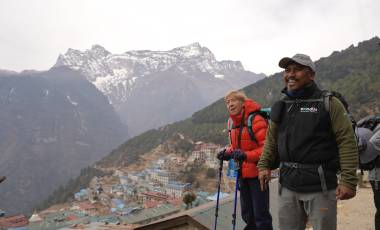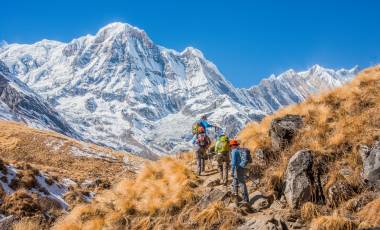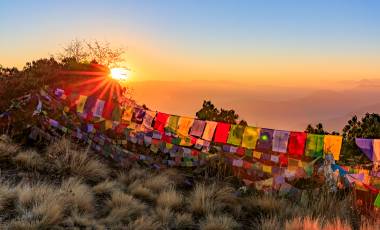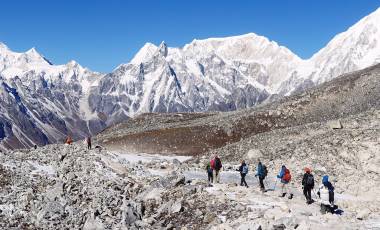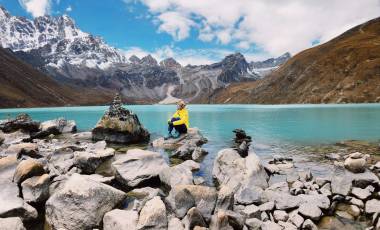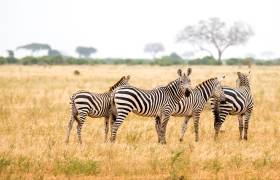Himalayan Treks, Spiritual Exploration, and Immersive Cultural Experiences

Trips to Nepal
Activities in Nepal
Our Top Destinations in Nepal
Our Best Trips to Nepal
Top 5 Nepal Tours
1. Everest Base Camp Trek
Experience the majesty of Nepal with this 16-day trekking adventure to Everest Base Camp. Begin your journey in Kathmandu, staying at the renowned Royal Singi Hotel before flying to Lukla and trekking through picturesque Sherpa villages. Ascend to Namche Bazaar and acclimatize with stunning views of Everest. Explore the Khumbu Valley, visit the iconic Thyangboche monastery, and reach the pinnacle of your adventure at Everest Base Camp. Conclude your trip with a return to Kathmandu, where you can explore the city’s cultural treasures.
2. Highlights of Northern India & Nepal
Embark on an unforgettable journey through India’s cultural wonders, culminating in the serene beauty of Nepal’s Lumbini, the birthplace of Buddha. Begin in Delhi, where you’ll marvel at the grandeur of Humayun’s Tomb and New Delhi’s colonial architecture. Traverse through Jaipur’s pink streets, exploring the majestic City Palace and Amber Fort. Witness the ethereal sunrise at the Taj Mahal before venturing into Varanasi, a city pulsating with spiritual energy along the Ganges. Then, cross into Nepal, where tranquility awaits in Lumbini, followed by thrilling wildlife encounters in Chitwan National Park. Conclude your odyssey in Pokhara, surrounded by the breathtaking Annapurna range.
3. Annapurna Sanctuary Trek
Begin your adventure in the capital city of Kathmandu, where you’ll be greeted by stunning views of the cityscape. Fly to Pokhara and journey to the quaint village of Birethanthi, surrounded by majestic peaks. Trek through rhododendron forests, encountering vibrant wildlife, to reach Upper Ghorepani for breathtaking mountain panoramas. Explore the high alpine wilderness of the Annapurna Sanctuary and spend the night at Annapurna Base Camp, surrounded by towering peaks. Conclude your adventure with a leisurely day in Pokhara before returning to Kathmandu.
4. Manaslu Lodge Circuit
Venture on an 18-day trek through the Manaslu Circuit, offering stunning views and cultural experiences. Start in Kathmandu with a transfer to Arket Bazaar, trekking through forests and villages to Soti Khola. Explore Tibetan-style villages and enjoy breathtaking mountain vistas as you ascend to Samagaon. Cross the challenging Larkya La pass for panoramic views before descending to Bimthang. Trek through picturesque landscapes to Nache and rejoin the Annapurna Circuit trail, ending in Syange.
5. Langtang & Gosainkund Lakes
Explore the heart of Nepal on this incredible trekking adventure. Begin in the vibrant city of Kathmandu, before traverse rugged terrain and picturesque landscapes as you make your way to Syabrubesi, immersing yourself in the rich culture of Nepal along the way. Trek through quaint villages and lush forests, marveling at stunning mountain vistas and sacred lakes. Experience the thrill of reaching heights like Kyanjin Gompa and Gosainkund Lake, where panoramic views await. Conclude your epic journey back in Kathmandu, where you can explore the city’s iconic landmarks or opt for a scenic Everest flight.
Bee A Annapurna Circuit TrekThis trip was unforgettable! Many people choose to do the Annapurna Circuit on their own and they mainly follow the Jeep track, which didn’t appeal to us. We were so happy and grateful that we decided to go with Exodus – we had the best guides! Sukman and his assistant guides Dipendra and Lakpa Sherpa were fantastic.
We had knock knock tea in the mornings – loved that part, and followed a mix of alternate trails (that weren’t well known) with certain sections along the main Jeep track. On those quieter trails, we rarely encountered other trekkers and definitely no other tour groups. We did pass herds of goats and met local people. We only saw other people along the main jeep track.
Two days before reaching Thorong La Pass, we had heavy snow. Thanks to Sukman’s expertise, he made the difficult decision to backtrack immediately. Many trekkers without guides, or those who chose to wait out the storm, ended up stranded at high camp and had to be rescued. We were fortunate to make it safely off the mountain in time, though it meant rerouting the second half of our trip. Even with the detour – we thoroughly this trip thanks to the amazing team. The porters were also incredible companions. Without them, carrying all of our belongings for three weeks would have been tough!!
Ed Barker Annapurna Circuit TrekThe most stunning trek you can imagine. The Himalaya’s really are great cathedrals of nature. Walk alongside 3 of the top 10 peaks in the world, with an itinerary set up to ensure you succeed at altitude and make it over the amazing Thorong La Pass at 5,416m. Most competitors do the trek in 2 weeks, missing large sections or not acclimatising properly – the 22 day version means you complete (just about) everything.
When is the best time of year to visit Nepal?
The best time to visit Nepal for trekking and adventure is during the dry seasons of autumn (September to November) and spring (March to May). These months offer clear skies, mild temperatures, and vibrant landscapes, making it ideal for exploring the Himalaya and other regions of Nepal. Winter (December to February) brings colder weather but clear skies, perfect for cultural exploration and festivals. Summer or monsoon season (June to August) sees heavy rainfall, making it a tricky time to visit. Check your trip notes for more advice on which departure is right for you.
How physically fit do I need to be to complete a Himalaya trek?
To complete a Himalaya trek, a good level of fitness is recommended due to the long days of hiking and altitude gains involved, so reviewing the tour’s activity rating, trekking distances, and altitude gains beforehand, as well as consulting trip notes and our fitness guide for preparation tips, is advised.
FAQs on Nepal Tours
A Nepal tour promises a captivating journey through breathtaking Himalayan landscapes, rich cultural heritage, and warm hospitality. From the towering peaks of the Himalaya to the serene valleys and lush forests, you’ll be immersed in stunning natural beauty at every turn. Explore ancient temples, monasteries, and UNESCO World Heritage Sites, engaging with local communities and experiencing authentic Nepali cuisine. Adventure enthusiasts can partake in thrilling activities like trekking, white-water rafting, and jungle safaris in national parks. Throughout your journey, you’ll encounter the warm hospitality of the Nepalese people, while spiritual exploration and scenic drives through tranquil villages further enrich your experience, leaving you with lasting memories of this diverse and enchanting destination.
During your Himalaya trek with Exodus, you can expect to stay in basic tea houses or lodges along the trekking routes. These accommodations typically feature shared sleeping quarters and communal dining areas, providing a cozy and communal atmosphere. While amenities may vary, you’ll find basic facilities such as beds with blankets or sleeping bags, shared bathrooms with running water (sometimes cold), and common areas for meals and relaxation. The charm of these tea houses or lodges lies in their rustic simplicity, offering a genuine experience of mountain living amidst breathtaking scenery. It’s an opportunity to immerse yourself in the local culture, enjoy warm hospitality, and connect with fellow trekkers and locals along the way. For more specific details about the accommodations on your particular tour and departure, check the trip notes.
The local guides leading Himalaya treks with Exodus are highly experienced and carefully selected for their deep knowledge of the trails and the region. They undergo rigorous training, including first aid and altitude sickness management, to ensure the safety and enjoyment of trekkers. Their expertise extends beyond navigation to encompass an understanding of local customs, weather patterns, and the region’s cultural and historical context. This wealth of knowledge enhances the trekking experience, allowing participants to fully immerse themselves in the adventure while feeling confident in their guides’ abilities. Whether navigating challenging mountain passes or sharing insights into the region’s culture and history, Exodus’s local guides are dedicated to ensuring an unforgettable journey through the Himalaya.
For a Nepal tour, pack versatile layers suitable for varying temperatures, including moisture-wicking clothing for trekking, modest attire for cultural sites, rain gear for monsoon season, and sun protection for high altitudes. Check your trip notes for more detailed packing information.
On our Nepal tours where altitude is a factor, altitude sickness prevention measures include acclimatization days built into the itinerary, gradual altitude gains, and experienced guides trained to recognize and manage symptoms of altitude sickness. Additionally, trekkers are advised to stay hydrated, ascend slowly, and listen to their bodies.
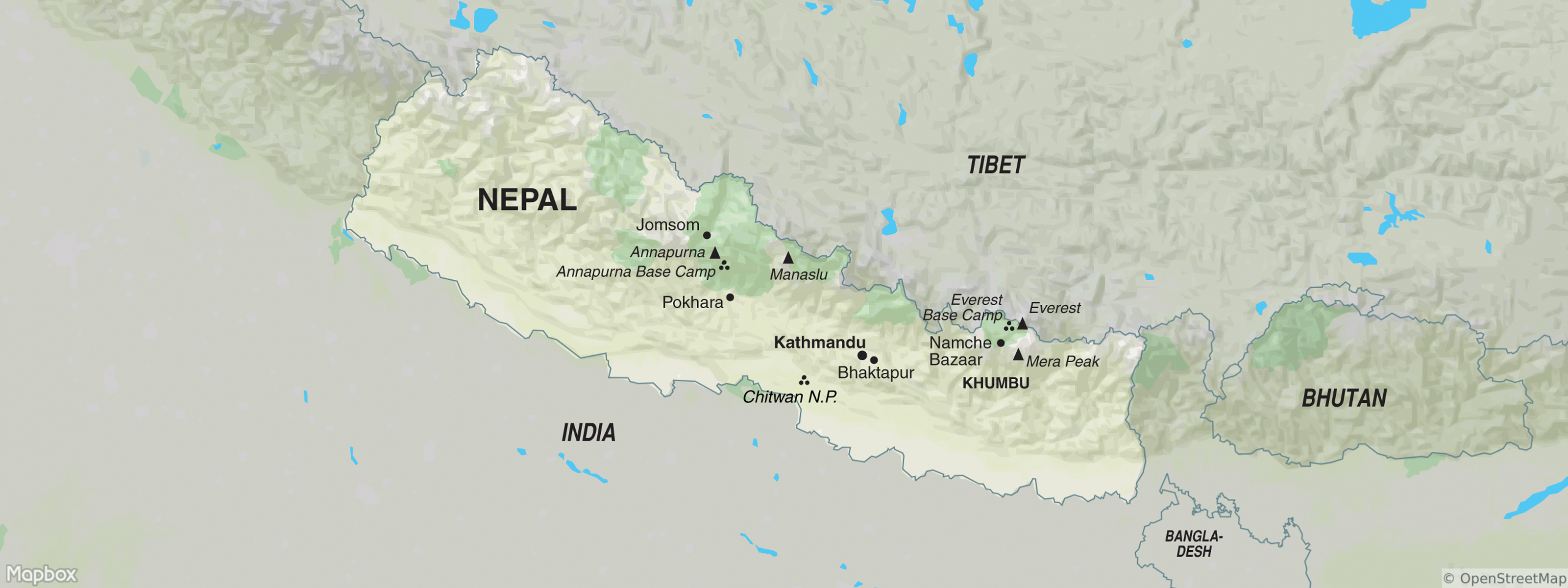
Expert Blog Entries
The Adventure Begins Here
Get regular inspiration straight to your inbox from Exodus’ experts.
